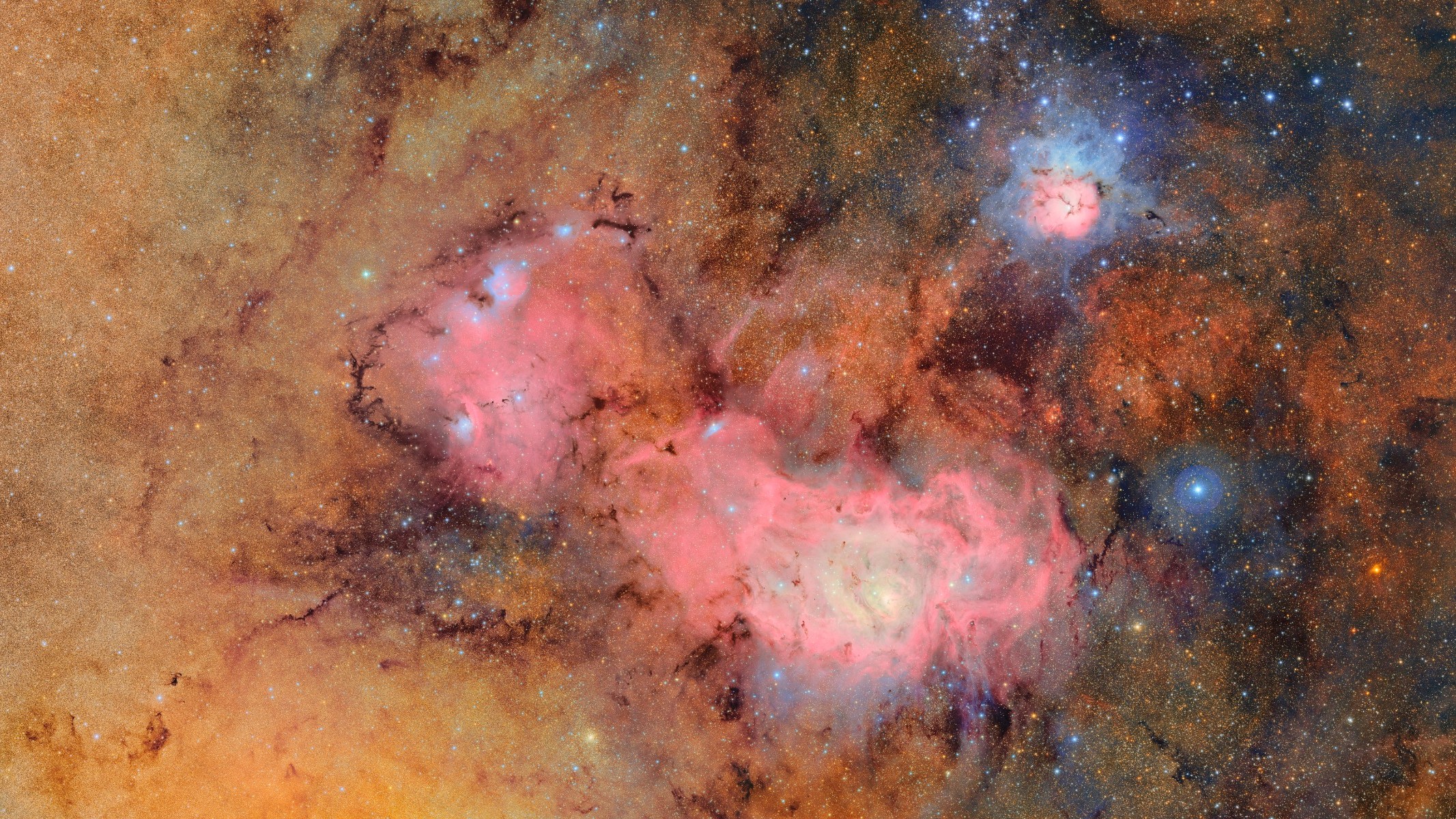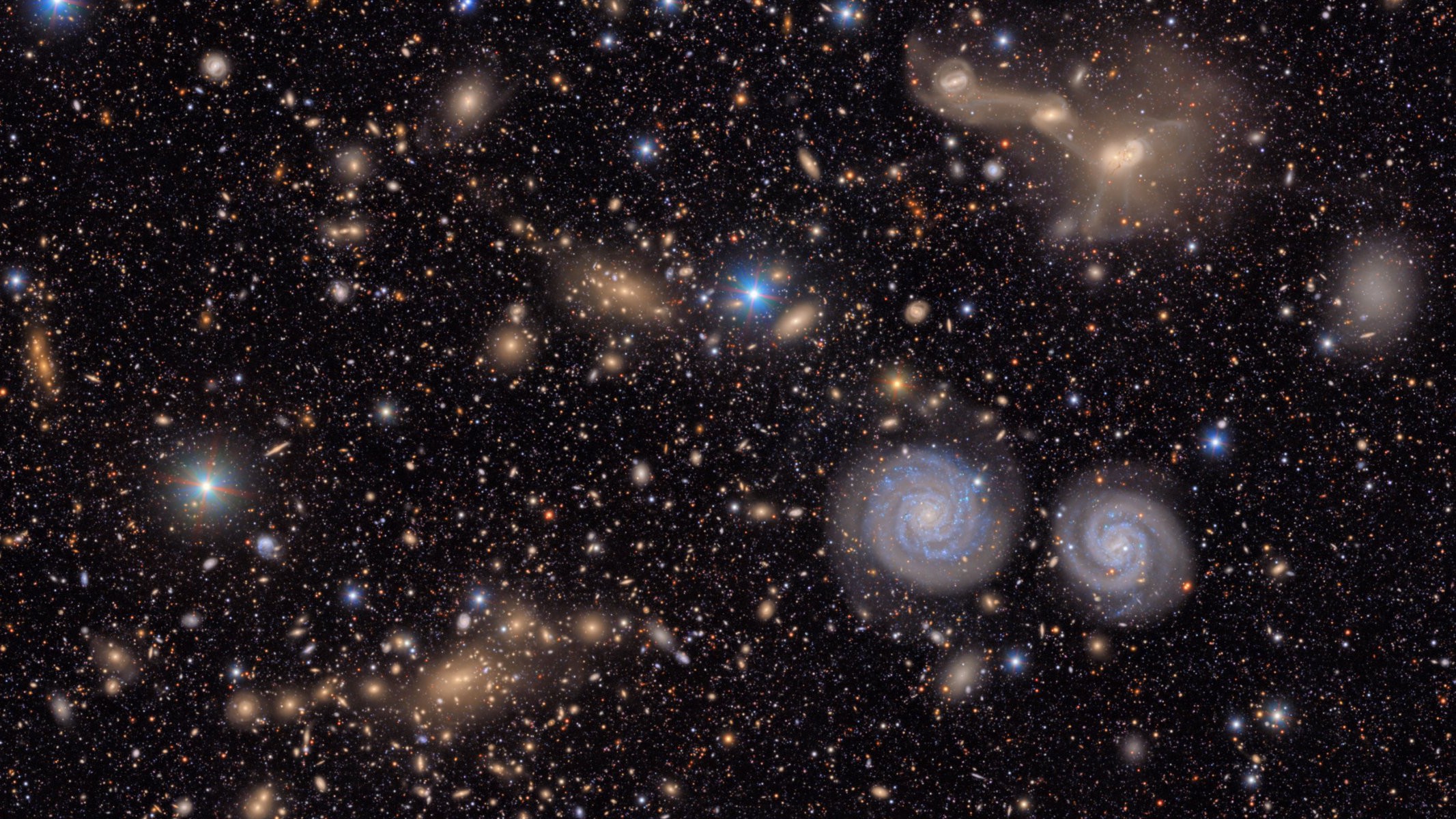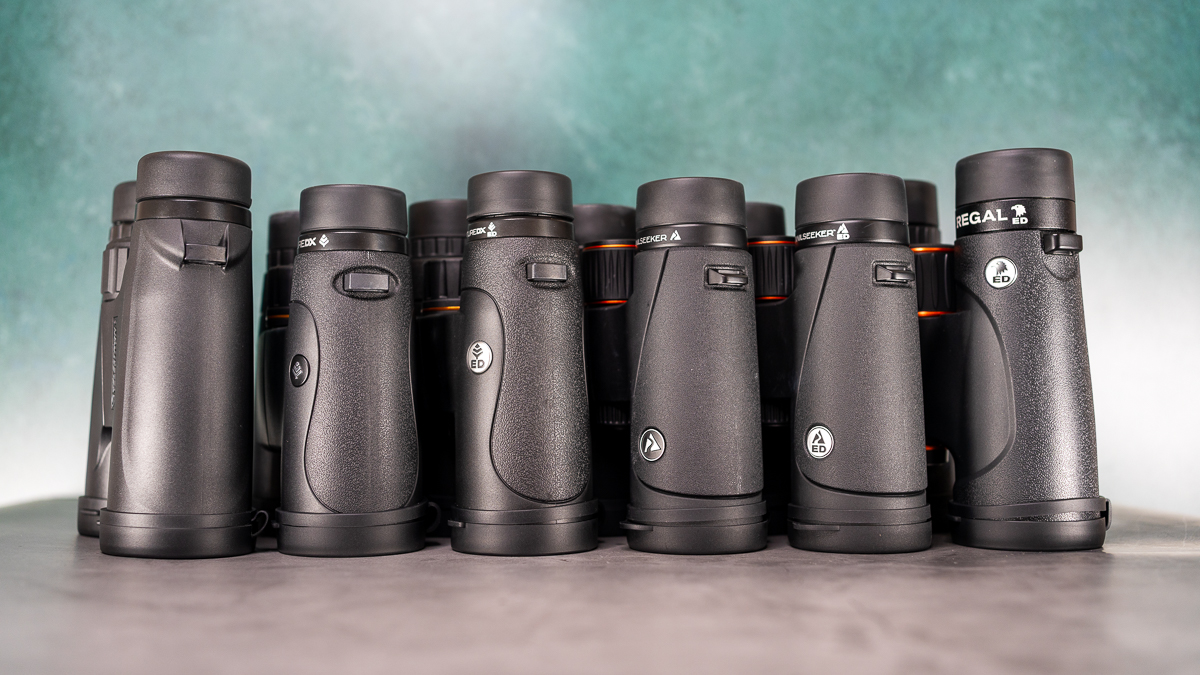Rubin Observatory releases 'sneak peek' of first images taken with world's largest camera
The world has gotten an early preview of the Rubin Observatory's first images, which include stunning snaps of spiraling galaxies and the Trifid and Lagoon nebulae.

The Vera C. Rubin Observatory has unveiled a "sneak peek" of the first images taken with its powerful astronomy camera — and the results are stunning.
The exceptionally detailed images are peppered with multicolored stars and spiraling galaxies. In one photo, the observatory has captured two nebulae, filled with bright pink clouds of gas and dust.
The Rubin Observatory is a next-generation telescope equipped with the world's largest digital camera. These first preview images are a major milestone for the observatory, which will become fully operational later this year.
Introducing...your sneak peek at the cosmos captured by @NSF–@doescience Vera C. Rubin Observatory!Can you guess what regions of sky they are?This is just a peek...join us at 11am US EDT for your full First Look at how Rubin will #CaptureTheCosmos!https://t.co/1a74X2edp8 pic.twitter.com/DE3tx2RQI4June 23, 2025
Representatives for the Rubin Observatory shared the stunning night-sky snaps on social media, ahead of an official presentation at 11 a.m. ET on Monday (June 23) via the Rubin Observatory's YouTube channel.
Observatory staff didn't reveal which parts of the night sky were captured in the preview images, and instead asked social media users to guess. Some users were quick to point out that the bright pink nebulae were the Trifid and Lagoon nebulae, located in the Sagittarius constellation around 9,000 light-years from Earth.
BBC News reported that one of the other images is of the Virgo cluster. This large cluster of galaxies has more than 1,000 members. In the Virgo cluster photo, two of its spiral galaxies are clearly visible as bright blue swirls.
Related: James Webb telescope unveils largest-ever map of the universe, spanning over 13 billion years
Get the world’s most fascinating discoveries delivered straight to your inbox.
Researchers plan to use the Rubin Observatory's massive camera to observe the universe from Earth in never-before-seen detail. Jointly funded by the U.S. National Science Foundation and the U.S. Department of Energy, the Rubin Observatory is located high in the Chilean Andes, on a mountain called Cerro Pachón.
Later this year, the Rubin Observatory will begin surveying the night sky as part of a 10-year mission. By capturing images around every 40 seconds, researchers will create a time-lapse of the visible universe across space and over time. When it's finished, the Rubin Observatory will have collected the largest optical astronomy dataset in history, according to the Rubin Observatory.

"This enormous, all-purpose dataset will bring the night sky to life, enabling scientists around the world to better understand the nature of dark matter and dark energy, create an inventory of the Solar System, map the Milky Way, explore the dynamic sky, and more," a representative from the observatory wrote on YouTube.
The Rubin Observatory's next-generation camera should help spot "planet killer" asteroids hiding in the sun's glare, and may also help settle the debate as to whether there's a ninth planet hiding in the outer solar system.

Patrick Pester is the trending news writer at Live Science. His work has appeared on other science websites, such as BBC Science Focus and Scientific American. Patrick retrained as a journalist after spending his early career working in zoos and wildlife conservation. He was awarded the Master's Excellence Scholarship to study at Cardiff University where he completed a master's degree in international journalism. He also has a second master's degree in biodiversity, evolution and conservation in action from Middlesex University London. When he isn't writing news, Patrick investigates the sale of human remains.
You must confirm your public display name before commenting
Please logout and then login again, you will then be prompted to enter your display name.


